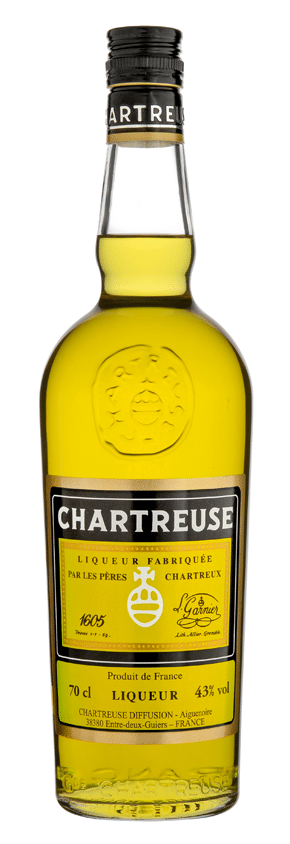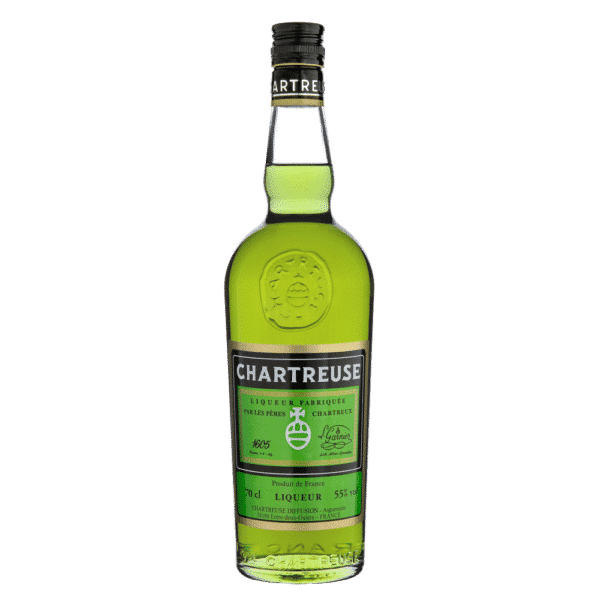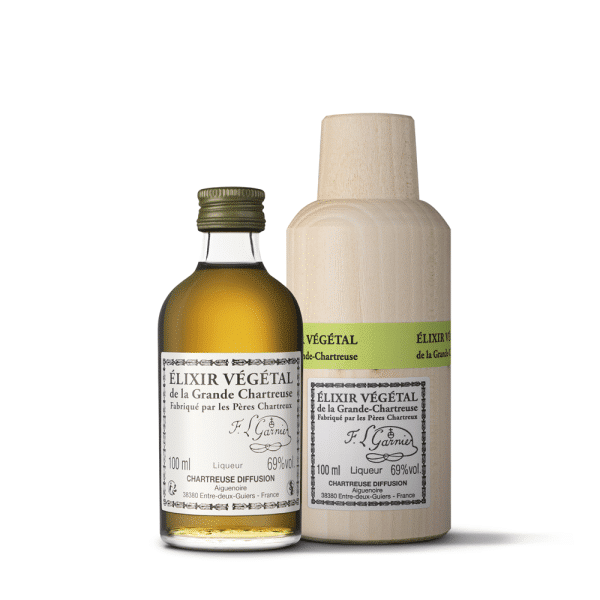
Yellow Chartreuse
Created in 1840, this yellow liqueur is inspired by the Elixir Végétal recipe. It was so popular that Father Garnier, attorney and responsible for liqueurs at the time, subsequently decided to officially name it Chartreuse Jaune and registered the “Chartreuse” mark in 1852. It was a liqueur with a 43 ° content, produced and still made today by the Chartreux Fathers.
Ingredients
Alcohol, sugar, water, plant substances (130 plants, bark, roots, spices and flowers).
Degrés d'alcool
43 % vol.
Bottle presentation
3cl, 20cl, 35cl, 70cl, 300cl - Bottle characteristic of Chartreuse liqueurs, neck swollen with the seal of the Grande Chartreuse in relief.
Nutritional informations
Elaboration
Chartreuse Jaune is characterized by its sweetness, spicy scents and natural color from 130 plants, flowers, bark, roots and spices.
Its production is significantly different from the Green Chartreuse and requires several weeks of work in various stages:
- Grinds made by the monks in the plant room at the Grande Chartreuse monastery.
- Distillation to obtain the aroma.
- Different types of maceration that extract the active ingredients from the plants and give the liquor its natural color.
It then ages for a long time in truncated cone-shaped oak vats before being bottled, and continues to evolve and develop its complexity in the bottle.
Its production is significantly different from the Green Chartreuse and requires several weeks of work in various stages:
- Grinds made by the monks in the plant room at the Grande Chartreuse monastery.
- Distillation to obtain the aroma.
- Different types of maceration that extract the active ingredients from the plants and give the liquor its natural color.
It then ages for a long time in truncated cone-shaped oak vats before being bottled, and continues to evolve and develop its complexity in the bottle.
Tasting notes
An intense yellow color, a fresh and spicy nose.
A soft structure.
Scents of turmeric, citrus and anise.
Floral notes extend the tasting.
CONSUMER TRENDS :As a digestif, to discover all the flavors and aromatic power. Serve ideally chilled between 12 ° and 13 ° or on ice.
Also used as an ingredient in cocktails since the 19th century, it brings subtlety and softness.
__
Photo © Stéphane Couchet
A soft structure.
Scents of turmeric, citrus and anise.
Floral notes extend the tasting.
CONSUMER TRENDS :As a digestif, to discover all the flavors and aromatic power. Serve ideally chilled between 12 ° and 13 ° or on ice.
Also used as an ingredient in cocktails since the 19th century, it brings subtlety and softness.
__
Photo © Stéphane Couchet



